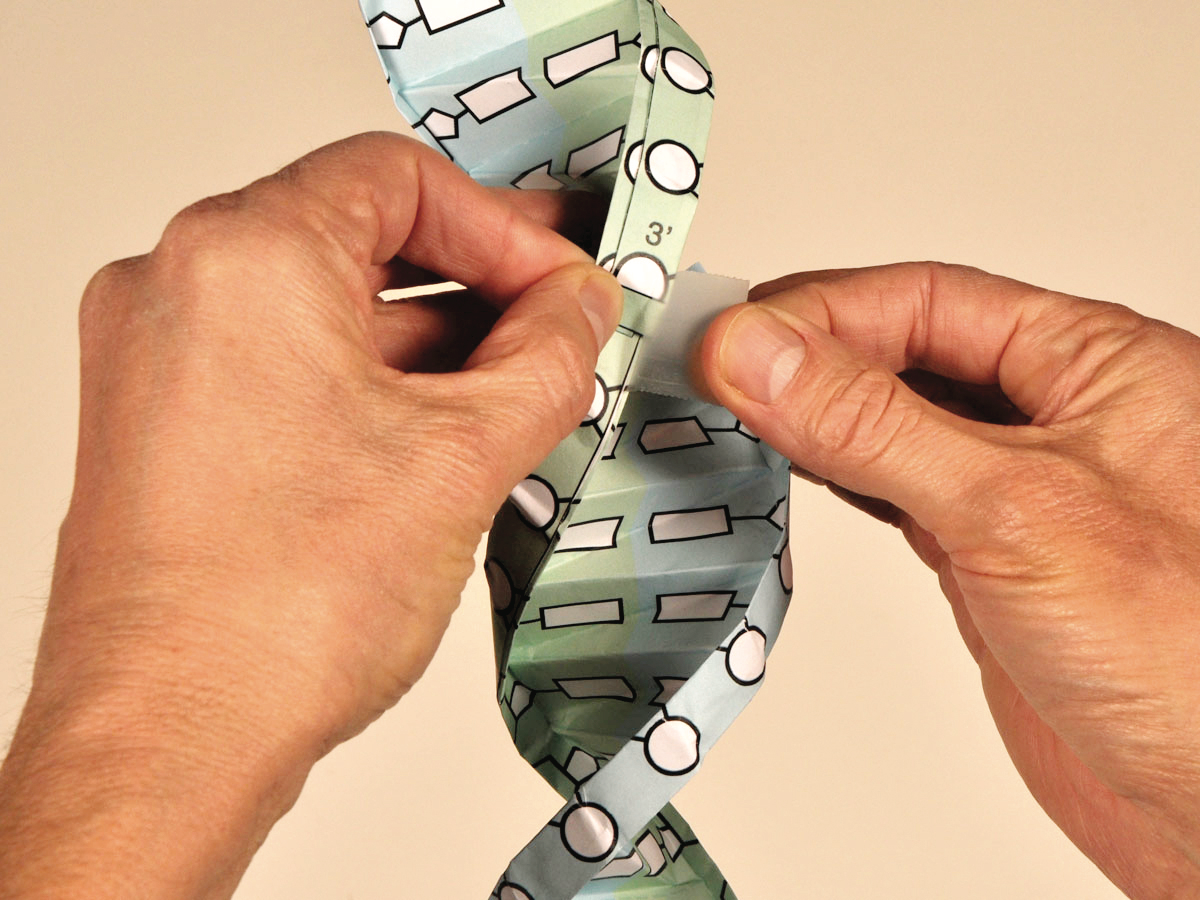
DNA is perfect for the storage and readout of genetic information. This information is stored in the sequence of Adenine, Thymine, Guanine, and Cytosine - also called A, T, G, and C. Each helix has a backbone made of alternating deoxyribose and phosphate groups.
Readout occurs in the 3’ to 5’ direction, making use of the pairing of bases between the opposing strands of the DNA double helix. In these pairings, A pairs with T and G pairs with C via sets of complementary hydrogen bonds.
The image here shows the folded DNA paper template juxtaposed to an image of DNA from PDB structure 1BNA
The PDB-101 DNA folding template and folding tutorial are available in English and Spanish. The tutorial contains an introduction to the DNA structure followed by the folding instructions.
DNA template and folding tutorial in English

Download and print the PDF template in English.
DNA template and folding tutorial in Spanish

Download and print the PDF template in Spanish.
Explore all PDB-101 resources about DNA
Explore all PDB-101 resources about the Protein Synthesis
Explore all PDB-101 resources in Spanish
DNA is perfect for the storage and readout of genetic information, which is stored in the way the bases match one another on opposite sides of the double helix. Adenine (A) pairs with thymine (T), and guanine (G) with cytosine (C), with each pair forming a set of complementary hydrogen bonds.
The all-atom model (shown on the second side) has the sequence C-G-C-T-T-A-A-G-C-G. Notice that this sequence is palindromic: if you take one chain and flip it around, it will form the proper base pairs with another copy of the chain. Add your own base pairs in the model to the right…but be sure to pair them up properly! The edges of the base pairs are exposed in the two grooves of the double helix: the wider major groove and the narrower minor groove. These edges are also used to carry information that is read by proteins that interact with the double helix.

To build this paper model of DNA, download and print the template PDF (English | Spanish). Instructions for cutting and assembling are included.
Video: How to fold the DNA paper model
About PDB-101 Testing instance
Researchers around the globe make 3D structures freely available from the Protein Data Bank (PDB) archive. PDB-101 training materials help graduate students, postdoctoral scholars, and researchers use PDB data and RCSB PDB tools. Outreach content demonstrate how PDB data impact fundamental biology, biomedicine, bioengineering/biotechnology, and energy sciences in 3D for a diverse and multidisciplinary user community. Education Materials provide lessons and activities for teaching and learning.
PDB-101 is developed by the RCSB PDB.
RCSB PDB (citation) is hosted by
RCSB PDB is a member of